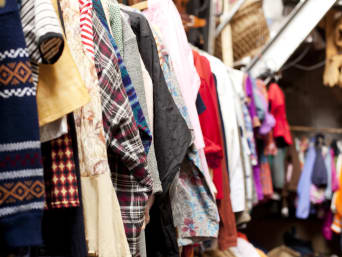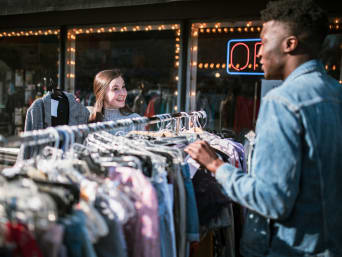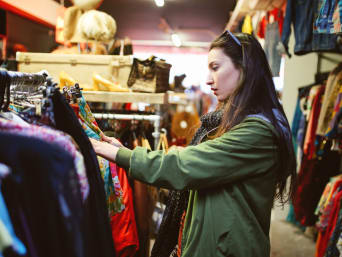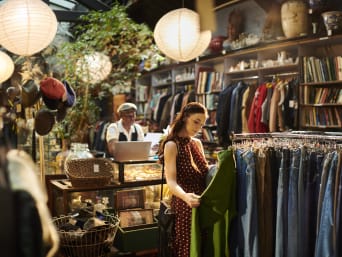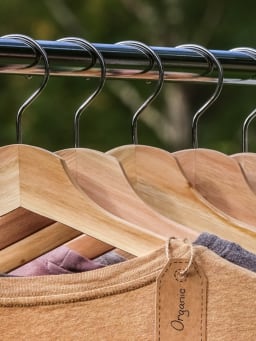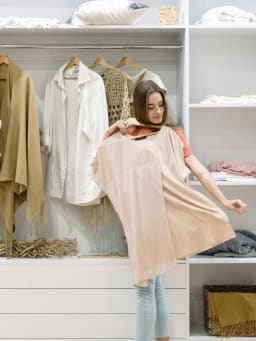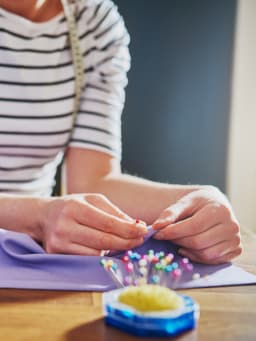Tips and advice on buying second-hand clothes
Buying second-hand clothes is not only a great way to find some absolute must haves or vintage clothes, but it is also considered a more environmentally friendly way to shop. In the following article you can find out more about buying second-hand clothes and how it is environmentally friendly and also cuts down on the use of resources.
Where can you buy second-hand clothes?
You don't need to wait until the next flea market to find some second-hand clothes. There are many ways to buy second-hand clothes locally or online.
Purchasing second-hand clothes online
Online there is a wide range of small and large shops that sell second-hand clothes. Online retailers will usually have everything you are looking for such as chic coats, sunglasses, famous fashion brands or designers.
Advantage: the online retailers will usually have a large selection of clothes to choose from. You can use filters such as size, colour or price to make your search easier. In most cases you can also return the clothes.
Disadvantage: the shipping and the packing used to send the clothes aren’t always environmentally friendly. This is also the case if you have to return any of the clothes.
Online websites and swap meets for second-hand fashion
Many community based online websites and swap meets allow you to sell your old clothes and buy second-hand clothes at the same time.
Advantage: on some websites with individual sellers or at special fashion events you can ask the sellers questions, negotiate the price or even offer your old clothes in exchange.
Disadvantage: communication and possible negotiations with the sellers require time and a little more patience. Generally, you will not be able to exchange or return any second-hand clothes that you have bought from a private seller.

Lots of people’s wardrobes are full of old clothes that were purchased for a specific purpose. Items of clothing such as evening dresses or wedding dresses are associated with unforgettable memories, but they usually just end up sitting there and gathering dust. As an alternative you could rent clothes for a special occasion instead of buying them.
Purchasing second-hand clothes in a shop
Especially in big cities, but also in some small towns, you can find lots of second-hand shops. From boutiques that specialise in trendy brands to shops that specialise in vintage clothes. In these type of shops you will be able to find almost anything your fashion heart desires. You can also find what you're looking for at events or markets.
Advantage: when buying from a shop you can browse and find unique items of clothing. You can also have a look at the clothes and check what kind of condition are they in before buying them. This is a quicker way to find out whether an item clothing looks great and has a good fit.
Disadvantage: not every town has second-hand shops selling high quality clothes. Looking for great second-hand clothes can be difficult as some shops only sell certain sizes.
What should you keep in mind when buying second-hand clothes?
Buying second-hand clothes can be an exciting and fun activity. Below we have put together some helpful tips on what you should keep in mind when buying second-hand clothes:
When buying second-hand clothes from private sellers, don't hesitate to ask lots of questions about the condition, fit or how to wash them. You can also ask for more photos or videos of the clothes. It can sometimes be a bit disappointing as exchanges are not always possible when purchasing clothes through a private seller.
It’s always recommended to wash any second-hand clothes before wearing them for the first time. It can sometimes be difficult to tell how clean second-hand clothes really are. If the items of clothing don’t have a care label then you should check what type of material it is made out of. If you are still unsure or if the material is very delicate it may be a good idea to take it to a dry cleaners to get it professionally cleaned.
Make sure to choose a shop that certifies the quality and authenticity of expensive designer clothes that they sell. If you purchase second-hand designer clothes through a private seller make sure to ask for proof of purchase and the original packaging.

Not every type of type of clothing is suitable for resale. Items of clothing such as socks and underwear cannot be resold for hygienic reasons, but a lot of people are also hesitant about buying second-hand shoes, swimwear or sportswear. Ultimately, you should only buy what you would wear and always make sure to check the condition of the clothes or shoes before buying them.
What is the difference between second-hand vintage and retro clothes?
Lots of people view fashion as more than just clothing, it is seen as a form of art, an expression of individuality and a piece of contemporary history. This makes it more exciting when you can find some truly stylish vintage clothes in a second-hand shop. However, what is the difference between second-hand and vintage clothes?
Most experts consider items of clothing that are at least 20 years old to be "vintage", but in most cases clothes from the 1920s to 1980s are also considered vintage. However, clothes from the 1990s and 2000s are also known as being "vintage". On the contrary, clothes labelled "retro" or made in "vintage style" only imitate past trends, whereas vintage clothes on the other hand are authentic.
You can usually recognise real vintage clothing by the way it was made. In most cases vintage clothing are one-off pieces or made-to-measure. You can usually see this, for example, on dresses which have a larger hemline from which the length of the fabric could be changed if the person’s body shape changed.
Have a look at vintage fashion blogs and guides to familiarise yourself with popular cuts and styles from the past decades, which will help you to find authentic vintage clothing.
The fabrics used for the clothes also provide information about the era in which they were made. It was not until the 1960s, for example, that various synthetic fabrics were increasingly used.
If the labels are still on the clothes they are usually very old and often do not match today's sizes.
Don’t be fooled by very cheap prices as vintage clothes are usually quite expensive and this is especially the case if they are very old or from sought after designers. The chance that the seller is not aware of the true value is usually rather small.
Make sure to take good care of vintage clothes so that you can enjoy them for longer as are they are often irreplaceable. Therefore, don’t forget to ask the seller questions about how to wash or repair them.
Is second-hand clothing sustainable?
Buying second-hand clothes is generally considered a more environmentally friendly alternative to buying new clothes. The clothes you buy in a second-hand shop have already been produced, transported and sold to a customer. You can sort through your wardrobe and give your unwanted clothes a new life, which in turn is more environmentally friendly because overtime this will help to reduce the number of resources being used.
However, in regard to sustainability there are also a few things you should be keep in mind when purchasing second-hand clothes. To support the goal of sustainable fashion or slow fashion you should avoid buying large quantities of clothes every season and not wearing them very often or selling them on. Even with second-hand clothes, you should not buy more than you can wear and you should stick to clothes you really love and enjoy wearing as you will get more out of them.
Conclusion: shopping for clothes in a more sustainable way
Selling old clothes and buying second-hand clothes is a good way to save money and help the environment at the same time. A sustainable way to shop for clothes is to buy second-hand clothes from a local shop, but make sure to buy them in moderation and only buy what you think you would wear. Shopping for second-hand clothes gives you the chance to find unique items of clothing that can completely change your look.
______________________________________________
References:
https://lifeinspirationfile.com/blog/best-places-online-secondhand-clothing-germany
(Last accessed on 06.06.2023)
https://www.realsimple.com/beauty-fashion/clothing/vintage-shopping-tips
(Last accessed on 06.06.2023)
https://www.pick-ethical.com/pros-and-cons-second-hand-clothes/
(Last accessed on 06.06.2023)
https://www.vogue.co.uk/fashion/article/second-hand-shopping-tips
(Last accessed on 06.06.2023)
Image sources:
iStock.com/alvarez
iStock.com/RyanJLane
iStock.com/lechatnoir
iStock.com/sturti
